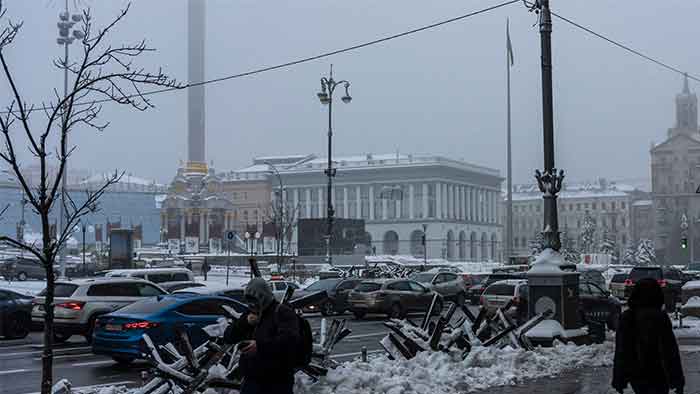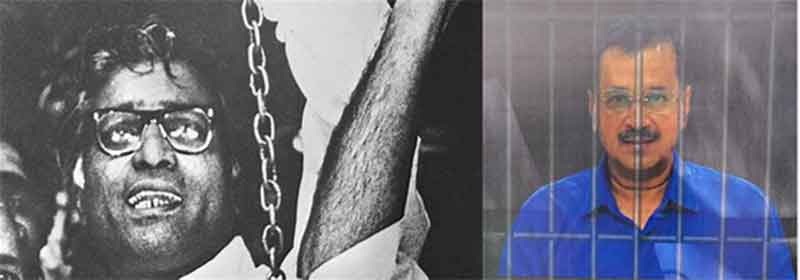
Ukraine is a strategically located country which is also well-endowed with natural resources in the form of vast stretches of fertile farmland and deposits of natural gas and lithium. It is a country with immense prospects for economic development and sustainability in meeting needs of its people particularly if its potential as the breadbasket of Europe is used in sustainable and ecologically protective ways. Ukraine has been known for its extensive farmland as well as its dense industrial development belts along with personnel of required skills needed for this.
Unfortunately, as the history of the past 80 years or so reveals, this potential of economic development was disrupted again and again by wars, proxy wars, coups, conspiracies ad corruption related to wider geo-political considerations. Instead of sustainable development, Ukraine had to experience a large number of deaths, huge displacements and even depopulation on more than one occasion, starting with Hitler’s invasion in World War II.
Ukraine was then a part of the Soviet Union, and millions of its citizens and soldiers played a heroic role in defeating the invasion of Hitler. However a minority also collaborated with the Nazi army and the mass killing of Jews by them. About 6.5 million Ukrainians were killed, nearly 1.5 million of them being Jews, in the entire cycle of violence caused by the Nazi invasion.
Subsequently when peace returned, Ukraine saw considerable increase in industrial as well as agricultural production as a part of the Soviet Union during the period 1945-90. Khrushchev was closely involved in ‘gifting’ the Crimean peninsula, endowed with considerable economic and strategic importance, despite its population consisting pre-eminently of Russian language speaking people (also referred to frequently as people of Russian ethnicity). On the other hand, in keeping with the Soviet Union’s record of frequently violating ecological and safety concerns, the quest of rapid economic growth also led to many ecological and safety disruptions culminating in the Chernobyl nuclear plant disaster on 1986.
In early 1990s the disintegration of the Soviet Union was followed by the establishment of the independent, semi-presidential, Republic of Ukraine. Fortunately the transfer of nuclear weapons was conducted in peaceful conditions and Ukraine was also able to reduce the overburden of military expenditure at that time. Unfortunately the economy failed to reap the benefit of this as there was a wave of arbitrary privatization and corrupt deal-making, leading to emergence of enormously rich oligarchs on the one hand and increasing problems of ordinary people burdened by rising inflation, unemployment and denial of previously available benefits on the other hand. In the middle of these increasing inequalities, priorities such as meeting the basic needs of people and protecting environment suffered.
Western interests were increasingly involved in pushing Ukraine towards rapid privatization and big business domination as well as in reaping big benefits from this. This ultimately led to significant acquisition of farmland and businesses in Ukraine by them (directly or indirectly), a trend which accelerated after 2014.
The majority of the Ukrainian people understood well that a safe and peaceful future for them was best ensured by a foreign policy of neutrality, benefiting from friendly relations with Russia as well as the west. This would have also been helpful for internal unity of Ukraine, more particularly between the eastern and western parts of the country, as the eastern parts (particularly the Donbas region) and the Crimean peninsula with high share of Russian language speaking people favored friendly relations with Russia while the western part of the country habitually looked westward for closer ties. Hence neutrality was essential for the objectives of peace, safety, unity and stability.
This would have been easier to achieve if the USA had followed its promise made in 1990-91 of not pushing the NATO eastwards. However the USA soon forgot this promise and aggressively pushed NATO eastwards. Membership of Ukraine was widely discussed, although this had been mentioned by Russia several times as a red-line. The USA almost habitually promoted anti-Russian politicians and groups in Ukraine, identifying the right-wing and extreme right wing groups as their closest collaborators, including the inheritors of the legacy of those who had collaborated with the Nazis during WW II.
The neo-Nazis and extreme right-wing groups, although not large in numerical terms, became exceedingly well-resourced and heavily armed, and were feared much by the activists of neutrality and peace.
This messed up the democratic processes in Ukraine, culminating in bigger protest demonstrations of people against a democratically elected government (which was hesitant about accepting an agreement involving over-dependence on the European Union and was keen to maintain a balanced relationship with Russia). These protests were provoked and controlled by US collaborators, who also took the extreme step of themselves massacring several of their co-protestors so that this could be blamed on the government.
In the middle of such allegations the government collapsed, and was replaced by a regime composed to a considerable extent of ministers hand-picked by the USA and its allies.
The ouster of this democratic government led by President Yanukovych, which had received a much higher share of vote in eastern parts and Crimea, disturbed the internal balance of the country and was opposed by the people of eastern parts and Crimea. Russian forces annexed Crimea, an action which had widespread support of people of Crimea. People of Donbas staged protests and were violently attacked by right-wing forces of Ukraine including neo-Nazis who had now made increased inroads in the army as well. Thousands were killed. Civil war type conditions developed. Russia moved its forces closer to the border and helped some of the Russian language speaking people who had taken up arms against attacks by neo-Nazis and armed forces of Ukraine. Separatist tendencies in the Donbas region were spreading fast now.
In this situation the Minsk Accords brought some hope of peace and unity, by seeking to find a solution based on autonomy for the Donbas region and nearby areas. However Ukraine authorities failed to honor their commitments. Later even senior representatives of European countries helping in the Minsk Accords admitted they were only helping to buy time for Ukraine to be better armed with west help (thereby only pushing the USA/NATO agenda while pretending to work for peace). This is not an allegation; this has been admitted by senior European leaders themselves.
In 2019 elections Zelensky was elected the President of Ukraine on an agenda of peace, but when after election he announced his intention of actually implementing it, he was threatened by an extreme rightwing leader that if he did this he would be hanged from a tree. Some of Zelensky’s supporters were actually attacked, and when those responsible for threats and attacks were not arrested, this revealed the extent to which the extreme-right wing forces with US backing had become almost unassailable by now. Subsequently Zelensky instead of putting up a brave struggle appears to have surrendered completely, and has increasingly done all that the USA says (as the agenda of fighting a proxy war against Russia) and its collaborators among the extreme right-wig forces say. Corruption in the new regime has increased much further, particularly in more recent months.
In 2021 attacks and shelling by Ukraine forces in the Donbas region increased significantly. In response Russia brought more forces to border, but at the same time Russia initiated new proposals for peace which were quite reasonable. These got no favorable response from the USA and its allies from Ukraine. The attacks in Donbas by Ukrainian forces continued to increase. Finally in the last week of February 2022 the Russian forces invaded Ukraine. Early in the conflict, in March-April, serious peace proposals, with the involvement of foreign countries like Turkey had advanced considerably, raising high hopes, but these were sabotaged by the USA and its closest ally Britain. Since then several hundred thousand soldiers of Ukraine have been killed or seriously injured, while at the same time millions of people have migrated, or else have been displaced internally.
Ukraine had a population of 50 million in 1990 which had decreased to about 40 million by 2020, the reduction being particularly acute during periods of acute disruptions which led to higher death-rate, lower birth-rate and high out- migration. After the onset of war, during 2022-23 again the population has declined further by about 4 million or so to about 36 million. The reduction would be much more if the population of the territories of Ukraine now under Russian control is also considered. Nearly 20 per cent of the territory of Ukraine has been lost since 2014 to Russian control.
Since the outbreak of the war, all opposition voices in Ukraine have been firmly silenced, so that the Ukraine policy and decisions are now largely reduced to what the USA says, what its right-wing local collaborators say, with Zelensky not just agreeing but now taking an increasingly aggressive stance himself, sometimes even overstepping US leaders.
Thus the Ukrainian situation has become extremely serious. If things continue to be the same, an increasing number of youth of Ukraine who need and deserve a safe future will be sacrificed at the altar of an entirely insane, avoidable proxy war being fought by the USA to weaken and isolate Russia. They will be sent to fight in a senseless war even when they are not trained or ready for this, and against their wish. What has been ‘achieved’ since 2014, since the ‘success’ of the US-controlled coup—loss of 20% of territory, loss of several hundred thousand lives, serious injuries to several hundred thousand people, displacement and homelessness of millions of people, higher risks to nuclear plants and dams, massive destruction of infrastructure, massive grab of farmland and businesses by oligarchs and foreign interests, repression of democratic dissent, hardly any room for voices of peace and reconciliation and strengthening of extreme right forces.
Clearly all this must stop, and the best way to do so is by implementing an unconditional ceasefire to be followed by very sincere peace negotiations to resolve all issues so that both the neighboring countries can henceforth live in peace. But USA leaders and local collaborators are not on the right side of this for their own reasons, and hence the peace movement and peace activists of the entire world have the most important role of bringing this peace, just as they helped to end the Vietnam War. In fact their role is even more important now as the Ukraine war, much more than other proxy wars, has the possibility of escalating to a direct confrontation between Russia and the USA/NATO, and hence for escalation to third world war and a nuclear war that can destroy our world to a large extent.
Bharat Dogra is Honorary Convener, Campaign to Save Earth Now. His most recent books include Planet in Peril, Protecting Earth for Children and A Day in 2071.














































